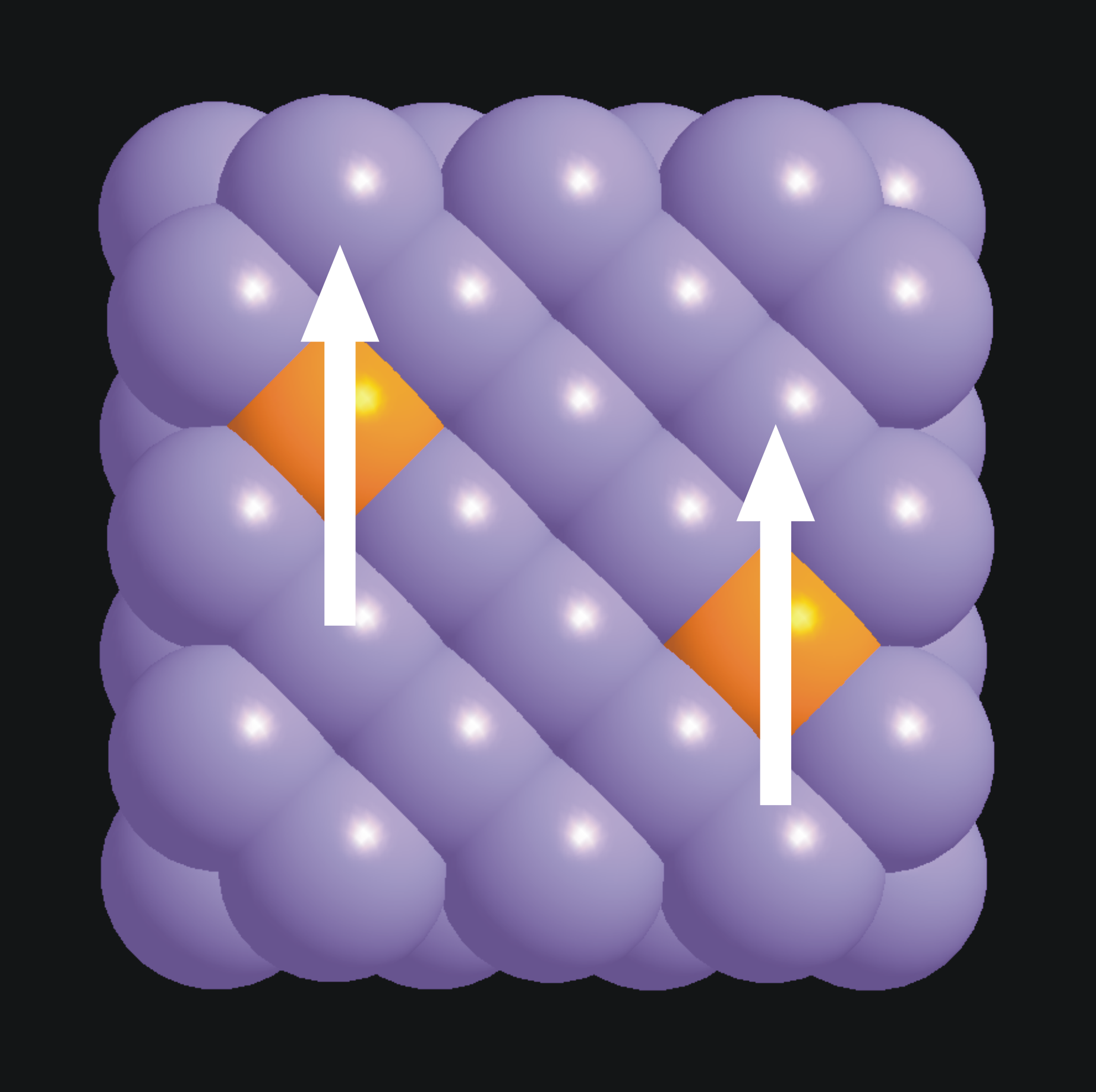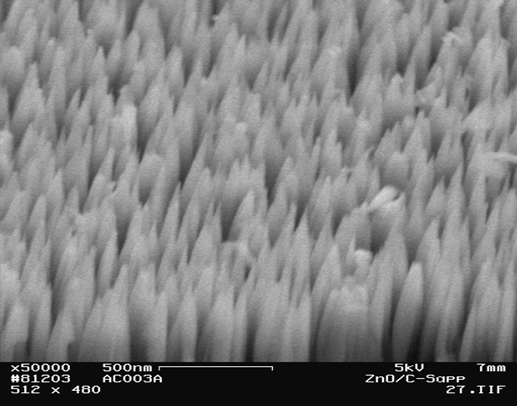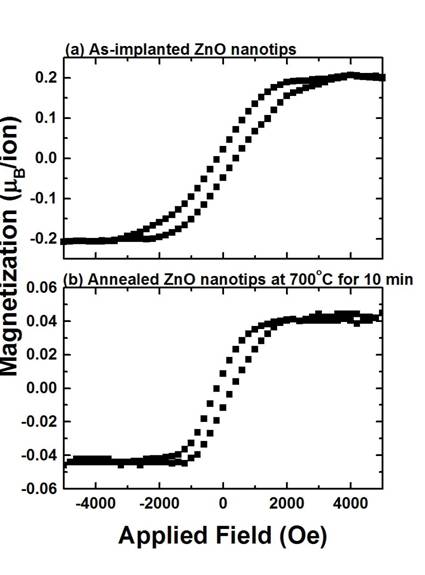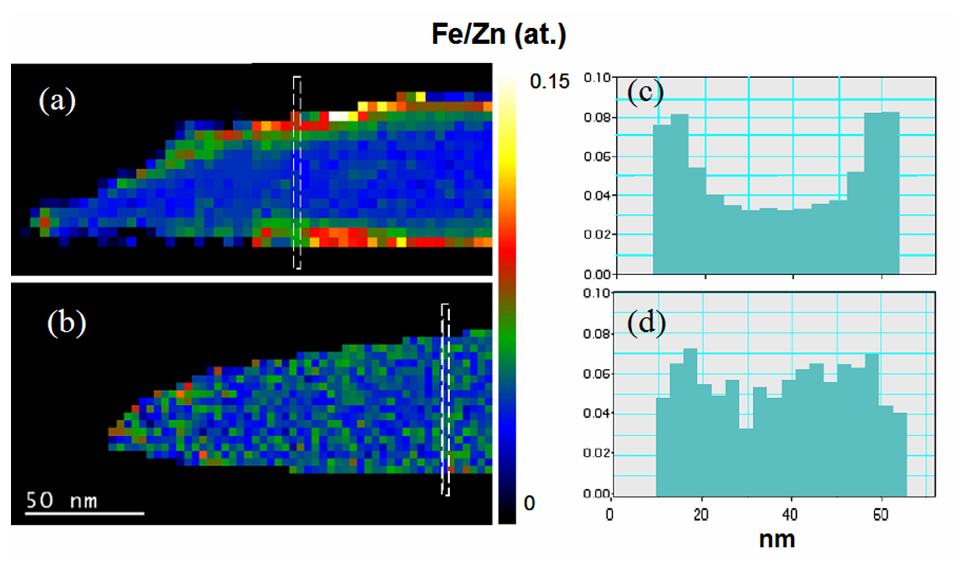|

DEPARTMENT OF PHYSICS AND
ASTRONOMY
LINKS
|

Basics: Dilute Magnetic Semiconductors
 Conventional
electronics manipulate electronic charges. An intriguing alternative
is the field of “spintronics”, wherein the manipulation of the
electronic spin in semiconductor devices gives rise to new
possibilities for a variety of applications, such as non-volatile
memory, quantum computing and communication in the solid state,
magneto-optical communication devices. A crucial element for the
success of spintronics is to find a proper material that combines
the desirable properties of ferromagnets and semiconductors. Diluted
magnetic semiconductors (DMS) also referred to as semimagnetic
semiconductors, are alloys whose lattices are made up in part of
substitutional magnetic atoms. In contrast to magnetic
semiconductors, DMS offer the possibility of studying magnetic
phenomena in crystals with a simple band structure and excellent
magneto-optical and transport properties. Existing techniques for
semiconductor heterostructure formation enable incorporation of DMS
layers into transistors, quantum wells and other electro-optical
devices in which the spin splitting can also be tuned by the
confinement energy and the size quantization. A key goal in this
field is achieving room temperature ferromagnetism in the DMS.
Recent work has demonstrated injection of spin-polarized electrons
into the semiconductor and ferromagnetic order temperatures of 110K
in III-V-based. The most challenging task for broad applications is
to find magnetic or diluted magnetic semiconductors which would
operate at room temperature. GaN and ZnO appear to be the most
promising materials to have Curie temperature at and above room
temperature, but the low solubility of transition metal impurities
in GaN, incorporation of transition metal ions is a considerable
challenge. Zinc oxide (ZnO), on the other hand, is a most promising
DMS material. It is a wide bandgap (~3.3 eV) semiconductor, which
has received increasing attention due to its broad applications and
its many desirable material properties. Conventional
electronics manipulate electronic charges. An intriguing alternative
is the field of “spintronics”, wherein the manipulation of the
electronic spin in semiconductor devices gives rise to new
possibilities for a variety of applications, such as non-volatile
memory, quantum computing and communication in the solid state,
magneto-optical communication devices. A crucial element for the
success of spintronics is to find a proper material that combines
the desirable properties of ferromagnets and semiconductors. Diluted
magnetic semiconductors (DMS) also referred to as semimagnetic
semiconductors, are alloys whose lattices are made up in part of
substitutional magnetic atoms. In contrast to magnetic
semiconductors, DMS offer the possibility of studying magnetic
phenomena in crystals with a simple band structure and excellent
magneto-optical and transport properties. Existing techniques for
semiconductor heterostructure formation enable incorporation of DMS
layers into transistors, quantum wells and other electro-optical
devices in which the spin splitting can also be tuned by the
confinement energy and the size quantization. A key goal in this
field is achieving room temperature ferromagnetism in the DMS.
Recent work has demonstrated injection of spin-polarized electrons
into the semiconductor and ferromagnetic order temperatures of 110K
in III-V-based. The most challenging task for broad applications is
to find magnetic or diluted magnetic semiconductors which would
operate at room temperature. GaN and ZnO appear to be the most
promising materials to have Curie temperature at and above room
temperature, but the low solubility of transition metal impurities
in GaN, incorporation of transition metal ions is a considerable
challenge. Zinc oxide (ZnO), on the other hand, is a most promising
DMS material. It is a wide bandgap (~3.3 eV) semiconductor, which
has received increasing attention due to its broad applications and
its many desirable material properties. |
Recent Highlights: Dilute Magnetic Semiconductors
Room Temperature
Magnetism in Fe-Implanted ZnO nanopillars
Using the appropriate parameters during MOCVD growth results in the
formation of single crystal ZnO nanopillars (~ 500 nm tall, 50 nm
diameter) oriented with their c-axis parallel to the rod axis.
Ion implantation was used to dope these nanorods with Fe at the ~ 3%
level. As seen in the electron micrograph below, the
implantation process leads to a pronounced sharpening of the
nanopillars as well as the introduction of Fe impurities. Room
temperature (RT) magnetization measurements [M(H) curves] obtained
before (upper panel) and after (lower panel) annealing (700C, 10
min.) show that RT ferromagnetism is present in both cases, but the
saturation magnetization after annealing is only ~ 20% of the
as-implanted value.

 
The lower panels show TEM images
of an individual nanopillar before (a) and after (b) annealing,
where the Fe/Zn ratio, determined by X-ray emission, is shown in
false color. Panels (c) and (d) show the indicated
concentration cross sections. It is clear that
diffusion-related redistribution of the Fe ions is directly
correlated to the ferromagnetic response of these nanoscale systems.
Systematic studies of transition metal diffusion in these important
potential room temperature spintronic materials are in progress.
Read more:
Room temperature ferromagnetism in Mn ion
implanted epitaxial ZnO films
D.H.Hill, D.A. Arena,
R.A. Bartynski, P. Wu, G. Saraf, Y. Lu, Wielunski, R. Gateau, J.
Dvorak, A. Moodenbaugh, and Y.K. Yeo, Physica Status Solidi A,
203, 3836 (2006)
|
Recent Publications
(back to top)
-
Magnetic properties of Fe-implanted ZnO nanotips
P. Wu, G. Saraf, Y. Lu, D.H. Hill, D.A. Arena, R.A. Bartynski,
F. Cosandey, J.F. Al-Sharab, R. Gateau, J. Dvorak, A. Moodenbaugh, J. A. Raley, Yung Kee Yeo, J. Electron. Mat.,
36, 529 (2007)
-
Room temperature ferromagnetism in Mn ion
implanted epitaxial ZnO films
D.H.Hill, D.A. Arena,
R.A. Bartynski, P. Wu, G. Saraf, Y. Lu, Wielunski, R. Gateau, J.
Dvorak, A. Moodenbaugh, and Y.K. Yeo, Physica Status Solidi A,
203, 3836 (2006)
-
Ferromagnetism in Fe-implanted a-plane ZnO
Films
D.P. Wu, G. Saraf, Y. Lu, D.H. Hill, D.A. Arena, R.A. Bartynski, L.
Wielunski, R. Gateau, J. Dvorak, A. Moodenbaugh, T. Siegrist, J.
A. Raley, and Yung Kee Yeo, Appl. Phys. Lett.89, 12508
(2006)
-
The relation between crystalline phase,
electronic structure, and dielectric properties in high-k gate
stacks
S.
Sayan, M. Croft, N.C. Nguyen, T. Emge, J. Ehrstein, I. Levin, J.
Suehle, R.A. Bartynski, and E. Garfunkel, AIP Conf. Proc. 788,
92 (2005)
-
Dichroic effects in Auger-photoelectron
coincidence spectroscopy of solids
R.
Gotter, F. Da Pieve. A. Ruocco, F. Offi, G. Stefani, R.A.
Bartynski, Phys. Rev. B. 72, 235409 (2005)
-
Inverse Photoemission Spectroscopy from
Al(100)
J. F. Veyan, W. Ibanez, R.A.
Bartynski, P Vargas, and P. Haberle, Phys. Rev. B. 71,
155416 (2005)
|
|